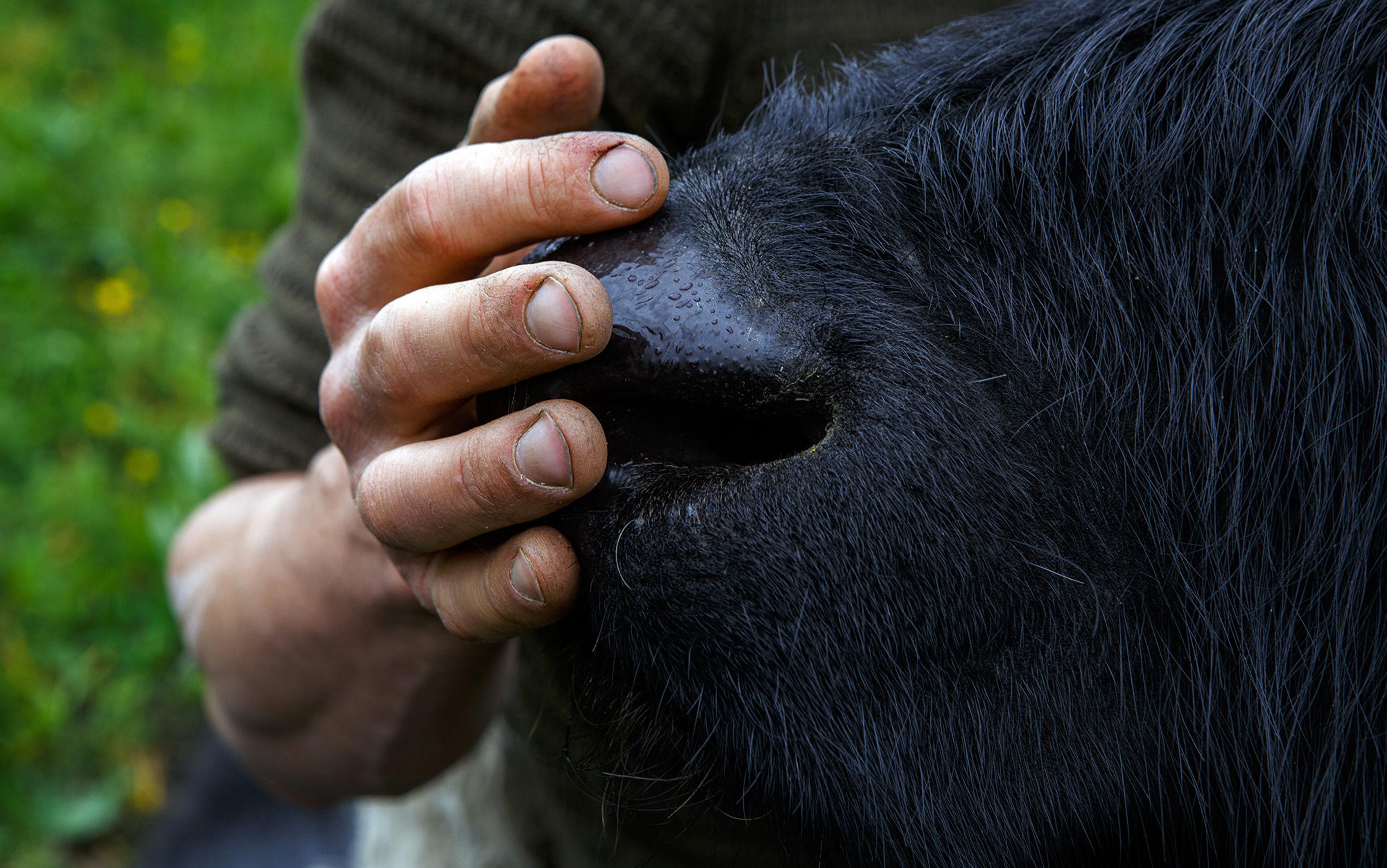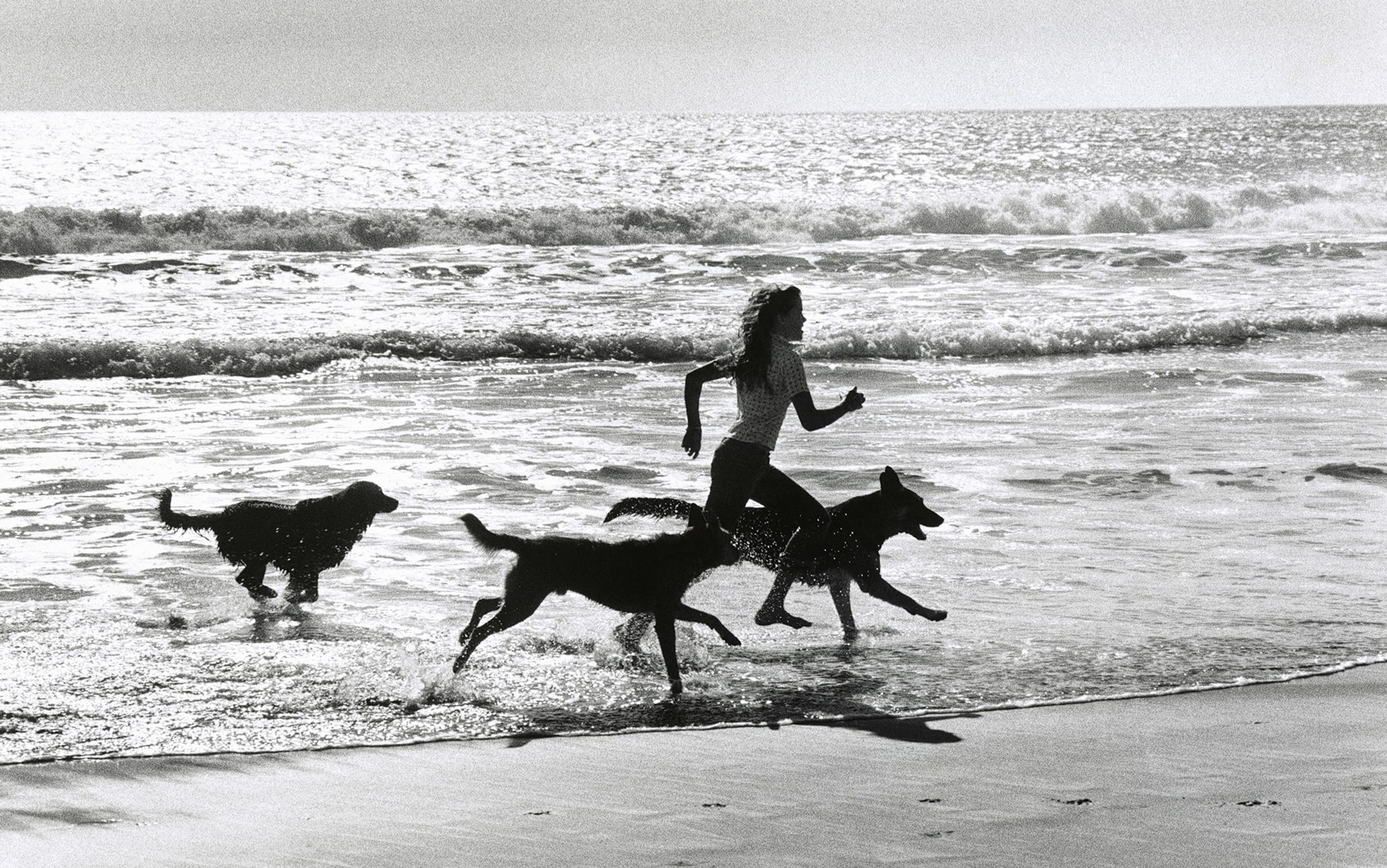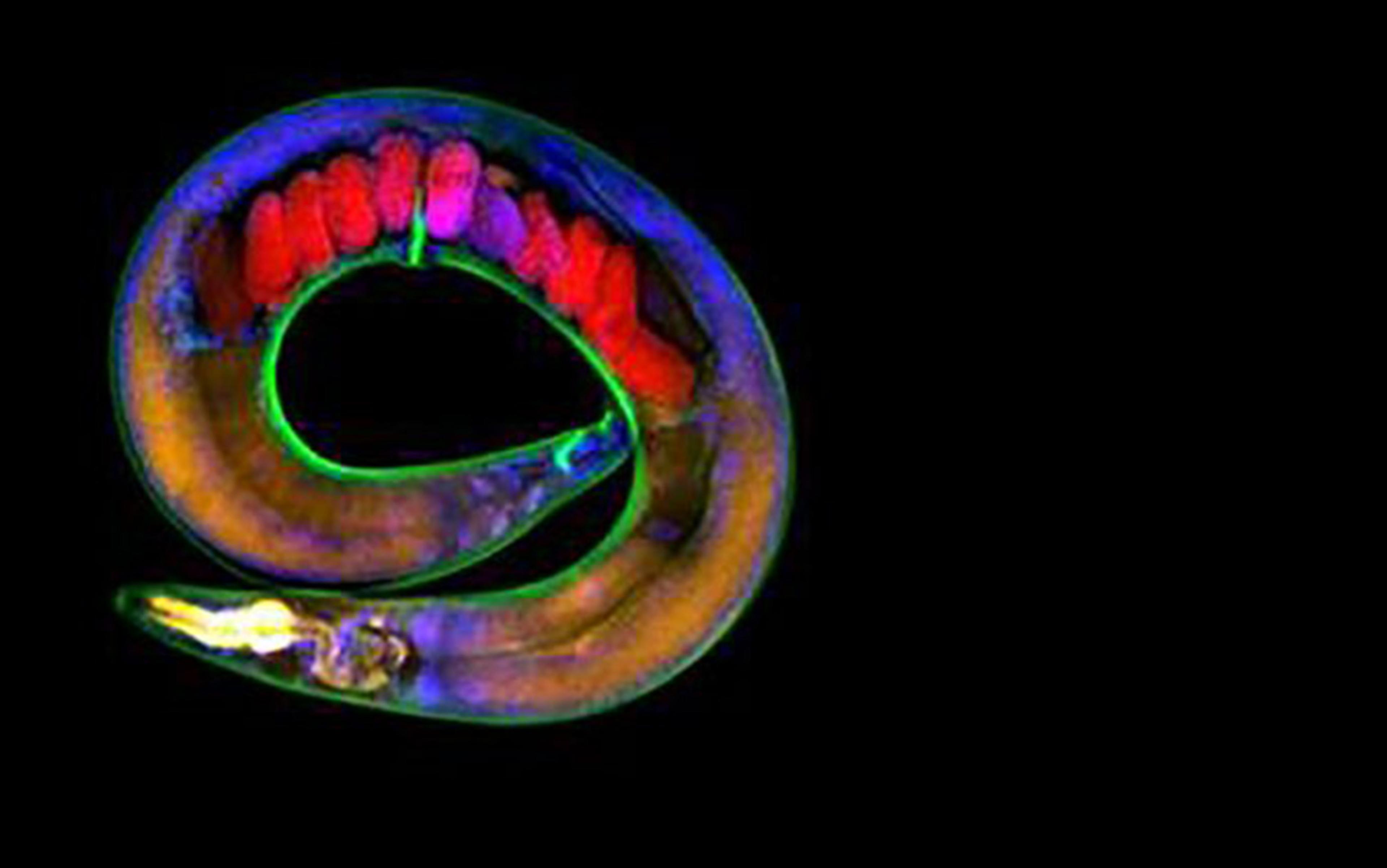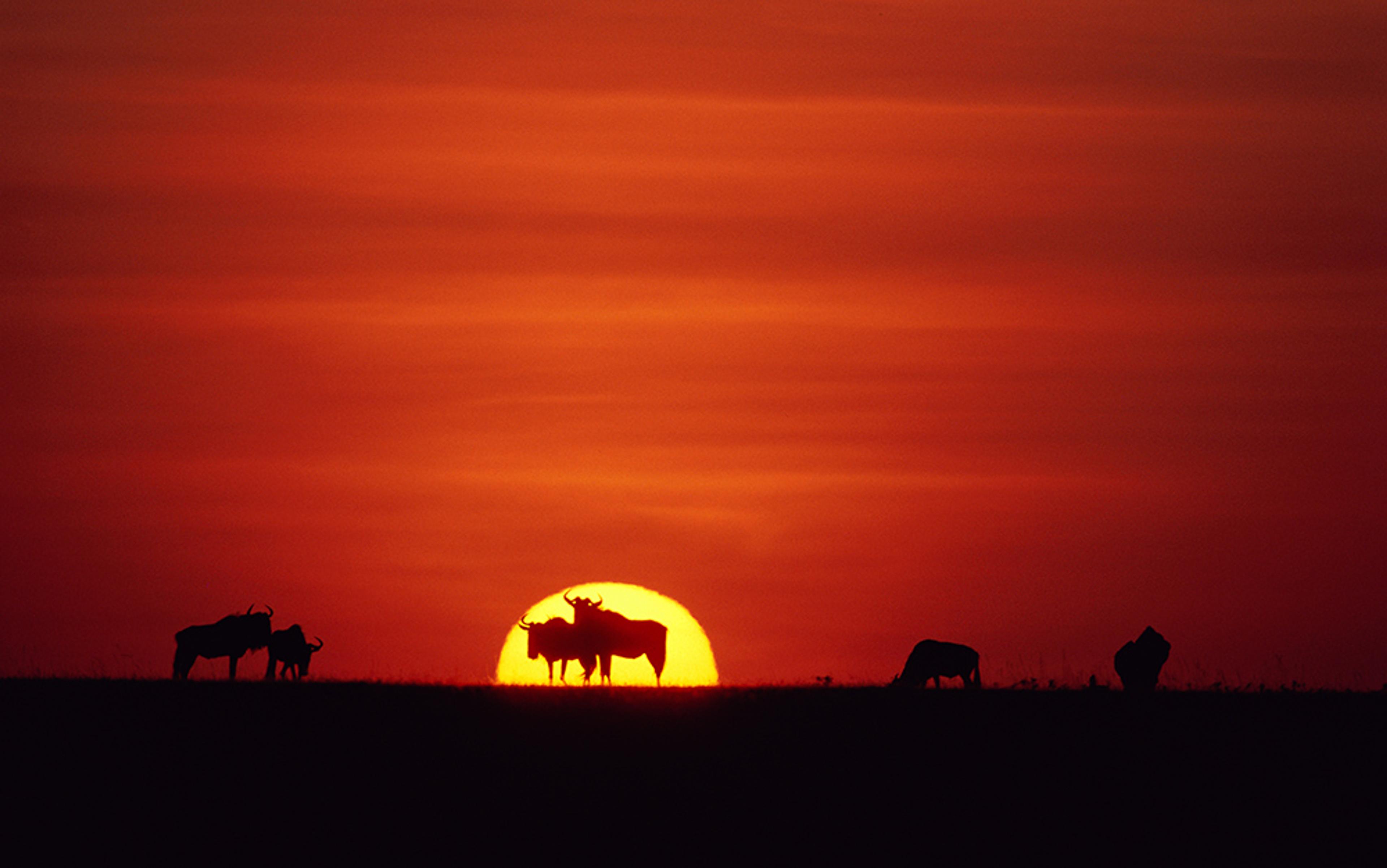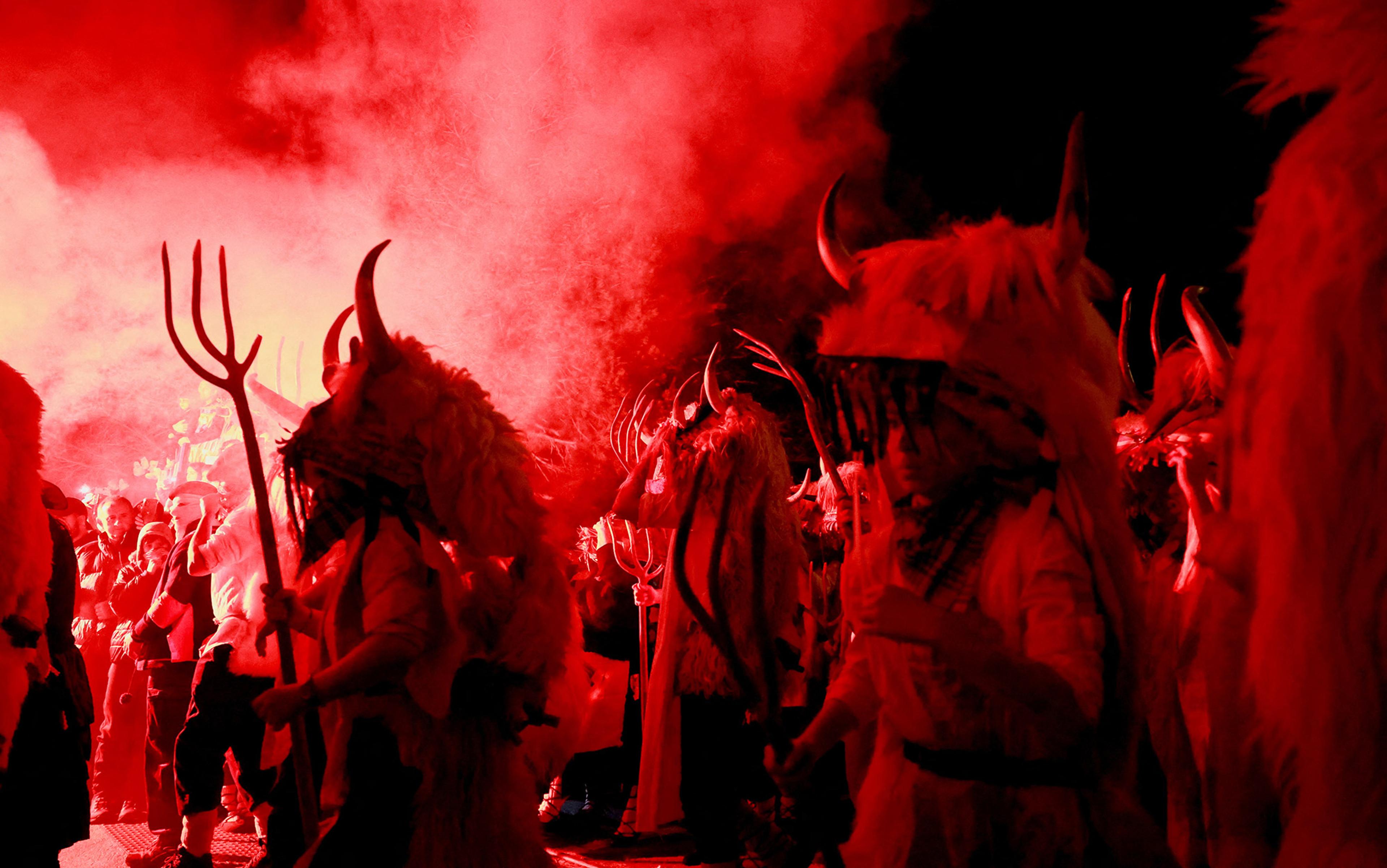Life is not a dream. Careful! Careful! Careful!
We fall down the stairs in order to eat the moist earth
or we climb to the knife edge of the snow with the voices of the dead dahlias.
– from the poem ‘City That Does Not Sleep’ by Federico García Lorca (1898-1936), translated by Robert Bly
Standing in the mix of muck and manure next to the dairy barn, I was talking to the camera about mad cow disease. This was the early 1990s, when farmers, the general public and politicians were in a panic about the possible dangers associated with bovine spongiform encephalopathy (BSE). When one of the heifers trundled over to me, bumped me with her nose, and proceeded to lick my coveralls, the news crew backed away, eyeing the heavy metal fence behind them.
‘Are they OK? Is that normal?’
I laughed and scratched the cow between her horn nubbins. ‘Completely normal. She just likes the salt on my coveralls.’ I then wondered if that was true. It was what, in veterinary college, I’d been taught. I was essentially a human substitute for the block of salt-lick used by many farmers. Or was there more to this cross-species interaction than the pursuit of basic physiological needs?
Recently, after I used a garden hose to flush a rat out of its hole in the chicken run, and then whacked it on the head with a brick, I was flooded with a deep sadness. My daughter suggested that I was channelling the grief I felt at a cancer diagnosis my wife had received the previous week. That may be true. However, this experience with the rat also evoked an intense, visceral memory from my days as a veterinary student. I had been asked by a professor to do away with a congenitally deformed newborn lamb. I do not recall instructions being given. In the service of some misplaced sense of moral doubt, I must have absorbed the idea that sudden death was more humane than lingering demise. I remember grabbing the lamb, slippery with birth fluids, by its hind feet, swinging it in a circle, and smashing it against a concrete wall. Were my subsequent feelings about these events misplaced anthropomorphic empathy?
What does it mean when a cat flops into my lap, and I immediately stroke it, or I laugh at a dog following its owner, who carries a small bag of canine scat? Are the cat and dog only after a snug, safe place to rest, some exercise, or food? When my half-dozen backyard hens settle down in a row behind the wire fence to listen to me sing Bob Dylan or Raffi, what are they hearing? If I read more than simple animal needs into these events, am I sentimentally anthropomorphising? Am I needlessly complexifying what are essentially simple relationships? I used to think so.
As an epidemiologist specialising in diseases other animals share with humans, I have frequently found myself wading waist-deep through a quagmire of quandaries, none more confusing than when, a few years ago, I struggled with the Alice-in-Wonderland issue of human relationships with insects. Insects are animals. Veterinarians, by law and inclination, are compelled to care for the wellbeing of all animals. Ergo… what?
In my teaching and research, I usually framed human-animal relationships, including those with arthropods, in terms of diseases transmitted between other animals and humans. I investigated the tick-borne Lyme disease, for instance, as well as the mosquito-borne West Nile virus, the tsetse fly-borne sleeping sickness, and leishmaniasis transmitted by sand flies. My work was to describe the life cycles of these diseases, and then find efficient ways of killing the vectors.
But insects are more than couriers bearing messages of parasites, disease and death. As several conferences of the United Nations have asserted, they are also an important, sustainable source of food for billions of people.
And more.
Many scientists did not think twice about using an insect to draw inferences about people
In 1909, Thomas Hunt Morgan proposed that the dipteran insect Drosophila melanogaster would be an ideal candidate for genetic studies. Drosophila are attracted to vinegar and other acidic breakdown products of fruit; hence they are commonly referred to as fruit flies. They reproduce quickly and do not have fussy nutritional requirements. Until the 21st century, they were the basis of much of our understanding of the genetic bases of human, animal and plant diseases, as well as our therapies for them. In honour of its great service to humanity, Drosophila was among the first multicellular animals to have its genome fully sequenced. Many scientists did not think twice about using an insect to draw inferences about people. In fact, Nicholas Strausfeld and Frank Hirth, in a paper published in the journal Science in 2013, point to deep similarities in how the brain regulates behaviour in arthropods (such as flies and crabs) and vertebrates (such as fish, mice and humans).
If we can learn about human cognition, behaviour and pathology by studying insects, how does this blur the boundaries between ‘us’ and ‘them’?
In making genetic comparisons between humans and other species, we can count strands of DNA, or genes (bundles of DNA with known functions). In epidemiological terms, these can be compared to counting individuals or groups such as households.
Ongoing studies into genetic similarities between species suggest that we could be, in some respects at least, 80 to 90 per cent genetically similar to cats, dogs, rats and cattle, a bit less so for chickens, and 40 to 60 per cent similar to various insects, including fruit flies.
This brings me back to re-examining my relationship to the cow in the corral, the cat in my lap, the chickens seemingly entranced by my singing, and to my grief at killing the lamb and the rat (but not mosquitoes and flies). Some of our genetic structures – those that translate into basic functional traits for preserving life – have evolved from common ancestors millions of years ago. These are our earliest collective memories, built into the very core of who we are. When I look into the eyes of a cat, or even a chicken, and when they return the gaze, are we recognising these unspoken, forgotten, shared genetic memories?
What of organisms that sense the world in other, nonvisual, ways? In the first decades of the 20th century, Jakob von Uexküll proposed that each organic being has its own perceived world. Since then, researchers have discovered that these Umwelten, as Uexküll called them, are created through senses we can barely imagine, let alone understand. I will not venture here into the lives of fungi or trees. I find it sufficiently confusing and distressing to consider my responsibilities to organisms we have labelled as animals.
Where do the memories reside that I share with these other species – not just the farm animals, pets and megafauna that have been the main concerns in my professional life – but also the tiniest of creatures underfoot, on my skin and in the air? What care and consideration do I owe them? Surely not just the glibly ambiguous assertion that we should not make nonhuman animals suffer. How would we know, when we have difficulty separating pain from suffering in humans?
I cannot find the words to articulate these memories, this joy, this grief, this knowledge.
Whatever action I take, walking, eating and excreting, incurs a cost to other lives, whether by killing and eating them directly, or by eating foods that they could otherwise have lived on. The most extreme impact my life has on other species is extinction, not just of their physical presence, but also of their memories, both those acquired within a lifetime and those embodied in their DNA, some of which are part of my own DNA. When organisms die and disappear, what are my responsibilities to those memories?
One of my colleagues once made the argument that every animal species that went extinct during our lives as professionals was a scaled-up, global failure of veterinary care. Any report of species extinctions would – indeed should, they asserted – evoke a sense of grief, loss and professional failure.
What then to make of the reports of an ‘insectageddon’, the global demise of trillions of individual insects, and probably millions of species, many of which we have yet to observe, study and classify? Is it my moral obligation to grieve the loss of unknown unknowns?
Where is the line between group-think and the corrective criticisms of our peers?
In public debates, extinction is often linked to the word species. Until recently, I thought somewhat loosely about the notion of species. Like all categorisations, the notion that living things can be sorted and definitively categorised into boxes can be useful. Certainly, it has been important for me professionally to be able to distinguish between cats, dogs, cows, sheep, pigs, elephants and giraffes. Once we stumble beyond individuals into the complex ecology of animal life, the classification system invented by wealthy Latin-speakers from Europe is more problematic. As Lulu Miller recently summarised in her book Why Fish Don’t Exist (2020), Linnaean taxonomy has, even in recent history, perpetuated brutal and cruel cultural practices of racial, sexual and organismal superiority.
Often, in public, scientists have argued for the aspirations of science to objectivity: if we throw all our observations into the same data pool, will our prejudices and biases correct each other? Where is the line between group-think and the corrective criticisms of our peers?
How can we think categorically about slime moulds that under some conditions behave as animals, and in others behave as plants, some of which are described as giant single cells with thousands of nuclei? Do we lump them together in some ill-defined box of leftovers? And what of the dinoflagellates, which I have struggled to explain to my students and colleagues, when toxic marine ‘blooms’ have appeared that threatened the health of people and other animals? Some photosynthesise, some ingest prey, some are symbionts in coral reefs. Taxonomists seem to have side-stepped the most contestable of the technical classifications by referring to clades, which are modern species descended from a common ancestor. Even those classifications are contestable.
Taxonomy is closely related to the way we think about the relationship between science and the world we live in. Many of our notions about science can be traced back to a 17th-century gentleman soldier and natural philosopher. In his Discourse on the Method (1637), René Descartes declared that he directed his thoughts:
in an orderly way; beginning with the simplest objects, those most apt to be known, and ascending little by little, in steps as it were, to the knowledge of the most complex; and establishing an order in thought even when the objects had no natural priority one to another …
What we think of as science in the 21st century is almost all such object-based Cartesian activity.
The best science, so we think, is done in the laboratory. Some epidemiologists have argued that the most reliable studies are double-blind randomised controlled trials, in which animal or human subjects and pharmaceutical objects are randomised. As expected, such studies work well in a laboratory or hospital setting, where interactions with local environments can be (at least theoretically) controlled. These research designs provide, at best, weak evidence of, say, dietary, vaccine or drug effectiveness in the complex, uncontrollable world we inhabit.
Object-based sciences face challenges even with the simplest binary outcomes for individuals. How do we define whether or not a person has diarrhoea? I used to tell my students that you knew someone had diarrhoea if their excrement took the shape of the container into which it was deposited. How do we define health? My daughter, as a teenager, suggested that a healthy person recovered from illness more quickly than a person who was not healthy. These definitions are workable, but you will not likely find them in any formal scientific publications.
Cartesian methods have an even more difficult time addressing questions about changing social-ecological systems, or cascades of extinction. What kind of science can be used to refute, or prove, approaches to achieving Sustainable Development Goals? It is difficult to imagine, and impossible to prove using conventional, laboratory-based science, that the disappearance of various arthropods or trees or frogs is related to human health and survival.
The Universe is not, as Descartes implied, just a collection of ‘objects’. The Universe exists by virtue of a complex web of relationships among things. And yet, apart from the blatantly obvious forces such as gravity, our object-based science has failed to address the relationships among all those things. Barry Smit, a former Canada Research Chair in Global Environmental Change, suggested that we have sometimes focused exclusively on what we call hard sciences (the implication being that social sciences are soft) and paid insufficient attention to the very difficult sciences that address social change in relation to environmental changes. Even for gravity, we keep looking for a particle where this invisible force might exist.
Many of us have clung to this reductionist object-based science as a hedge against religious and political dogma, and because, under some circumstances, it ‘works’. Object-based sciences have allowed us to describe, in fine detail, the structures of viruses, dogs, trees, planets, butterflies. We can do surgery on a cat that has swallowed a Christmas ornament or on a cow that requires a C-section. We can describe in awesome detail the dances and battles among birds, bees, gorillas, elephants, kangaroos and humans. We are amazed at the many different, sometimes unimaginable, ways in which dogs, bees and bats perceive the world we share. Inverting our telescopes and peering into the mysteries of bodies, we can create vaccines against spike proteins, alter the genomes of insects so that they cannot carry diseases of human interest, observe prions, which are alive only in a co-dependent sense, and which may or may not cause disease. We can detect, albeit fleetingly, what we think are the tiniest particles of matter and energy in the Universe; we give them names like quarks (from James Joyce’s 1939 novel Finnegans Wake) and bosons (named after the Indian physicist Satyendra Nath Bose).
And is not the very contestability of object-based science an advance over certainty based on instinct, belief or ideology? We can at least search for various sorts of evidence or mathematical plausibility to advance arguments and counterarguments. These achievements of what Thomas Kuhn called ‘normal science’ are considerable. But if the idea of species is contestable, and if memories persist in some way among organisms, and if we are more than a collection of objects, but rather one tangled web of life, what falls between the spaces of all these objects. What is it that goes extinct, if not species?
I am the manifestation of a conversation among microbial lives, who are in conversation with everything else
If my research into conflicted relationships among humans and arthropods challenged my assumptions about animals and species, then bacteria, archaea, fungi and the quasi-living things we call viruses challenge my deeper assumptions about self and being. These organisms share genetic material – memories of past experiences – among themselves, leading some to argue that, by some criteria, their global populations are one species, or perhaps even one organism. Our bodies are composed of trillions of cells, many of which are evolutionary descendants of primordial single-celled organisms. Throughout evolution, viral genetic materials have inserted themselves into the human genome. Also, our bodies are hosts to many tens of trillions of a variety of single-celled organisms that the Nobel Prize-winning microbiologist Joshua Lederberg named the microbiome. Members of this microbiome communicate with each other using what is now called quorum sensing, and communicate with the cells that make up our bodies through languages constructed of molecules that cross all our protective, self-defining boundaries. Members of this microbiome, in conversations with the cells of our bodies, influence our immunity, our behaviour, our nutritional and health status, our mental states. We are a creation of our microbiomes, bearing, in physical form, deep memories of life on Earth.
Microbiomes are at once intensely local, a conversation through eating and defecation with the landscapes we inhabit, and global, engaging in microbial conversations among populations of viruses, bacteria, archaea and fungi transmitted through trade, migration, wind and water currents. I am the manifestation of a conversation among microbial lives, who are in conversation with everything else – the cow licking my coveralls (whose microbiome is partly determined by soymeal and grain from other landscapes), the trillions of bacteria in the manure on my boots, the cat in my lap, the malformed lamb, the rat digging into my chicken coop, the chickens lining up at the fence, listening to me sing.
Some of my students used to find themselves paralysed by the spaghetti diagrams we constructed of connections among organisms, disease, social dynamics and ecological and climate changes. If everything is connected to everything else – not in some New Agey mystical way, but in terms of observable, if only vaguely predictable, impacts and consequences – how can we possibly act?
I do not contain multitudes. I am multitudes. When I interact – surgically, medically, physically, epidemiologically – with other organisms, I am not battling a pandemic disease or bodily dysfunction. I do not require a better armamentarium. I need a greater facility with multispecies languages. I am engaging in a conversation across cultural divides with other multitudes, whose languages and modes of perception we have only just begun to explore. Considering this biological new frontier, Lederberg lamented that biology ‘is already so fact laden that it is in danger of being bogged down awaiting advances in logic and linguistics to ease the integration of the particulars.’
This later Hawking rejected the idea that unconditional laws governed a machine-like universe
Not long ago, most physicists worked with an unspoken assumption that the Universe was held together and functioned according to laws that, even as they determined the nature and shape of a cosmos we perceived, somehow existed outside of time and space. In his book A Brief History of Time (1988), Stephen Hawking asked:
What is it that breathes fire into the equations and makes a universe for them to describe? … Why does the universe go to all the bother of existing? …
[I]f we do discover a complete theory, it should in time be understandable in broad principle by everyone, not just a few scientists. Then we shall all, philosophers, scientists, and just ordinary people, be able to take part in the discussion of the question of why it is that we and the universe exist. If we find the answer to that, it would be the ultimate triumph of human reason – for then we would know the mind of God.
But in his book On the Origin of Time: Stephen Hawking’s Final Theory (2023), Thomas Hertog, Hawking’s friend and close collaborator, reported this conversation with Hawking from 2002:
Stephen skipped his customary small talk and launched right in.
I have changed my mind. [A] Brief History [of Time] is written from the wrong perspective …
A God’s-eye view [which Brief History took] is appropriate for laboratory experiments like particle scattering where one prepares an initial state and measures the final state. However, we don’t know what the initial state of the universe was and we certainly can’t try out different initial states, to see what kinds of universes they produce …
The failure to recognise this, he clicked, has led us into a blind alley. We need a new philosophy [of physics] for cosmology.
Rather than searching for an all-encompassing theory that could explain everything, this later Hawking rejected the idea that unconditional laws governed a machine-like universe. His new understanding was that ‘the universe is a kind of self-organising entity, in which all sorts of emergent patterns appear … [and that] if there is an answer to the great question of existence, it is to be found within this world, not in a structure of absolutes beyond it.’ In effect, this says that, if we begin with where we are and grope into the Universe beyond us, we do not discover a final theory of everything. ‘We create the universe as much as it creates us,’ Hawking concluded.
Many of us in applied biological sciences, especially ones related to epidemics of zoonotic diseases, and the relationships between the health of humans, other animals and ecosystems, have long recognised the challenges of managing ecosystems from the inside out. It is reassuring, from a scientific viewpoint, that physicists are coming to similar conclusions.
If we stand back a little, it is not an imaginative stretch to see that what some cultures have called sacred beings, groves, springs, valleys, spirits or gods are a fusion of (unseen) gravitational forces, and the regenerative and personal, quorum-sensing conversations among microbiomes.
The forces of gravity, with their electromagnetic, strong and weak couriers, link everything, everywhere, sustaining and giving shape to the cosmos in which we dwell. In the imperial, colonising imaginations, not just those of the Europeans and their post-Enlightenment descendants, but also those of the myriad other ‘ans’ – Assyrians, Babylonians, Egyptians, Mongolians, Persians, Romans, Russians, Germans, Mauryans – these mysterious forces were called gods. Organic Being, emerging from the microcosmos, was long honoured in sacred places, diets, waters, spirit animals and people.
Since Being and the Universe are co-creators, and the future is uncertain, everything we do matters
Our task as humans is to explore, in every way we can, what this means.
In this understanding of the Universe, there are no laws handed down from beyond the world we know, no tablets, revealed scriptures, oracles or final theories designed by mathematicians or physicists or biologists that can explain everything.
If we begin with where we are, what we observe, what (we think) we know – the relationships and nonverbal communications and conversations among the cows, the cats, the chickens, the rats, lambs, ticks, bacteria – we can begin to create a non-object-obsessed science commensurate to the task, an expanded, multispecies version of post-normal science.
For those who seek meaning in the world, I can think of no better beginning than observing that, since Being and the Universe are co-creators, and the future is uncertain, everything we do matters.
I return to my presence in the midst of this physical evidence – the cows, ticks, fruit flies, cats, chickens, lambs and bacteria. Together, we are searching for ways to preserve our collective memories beyond the extinction of our cobbled-together bodies and species, into a renewed, renewable world we cannot imagine.
